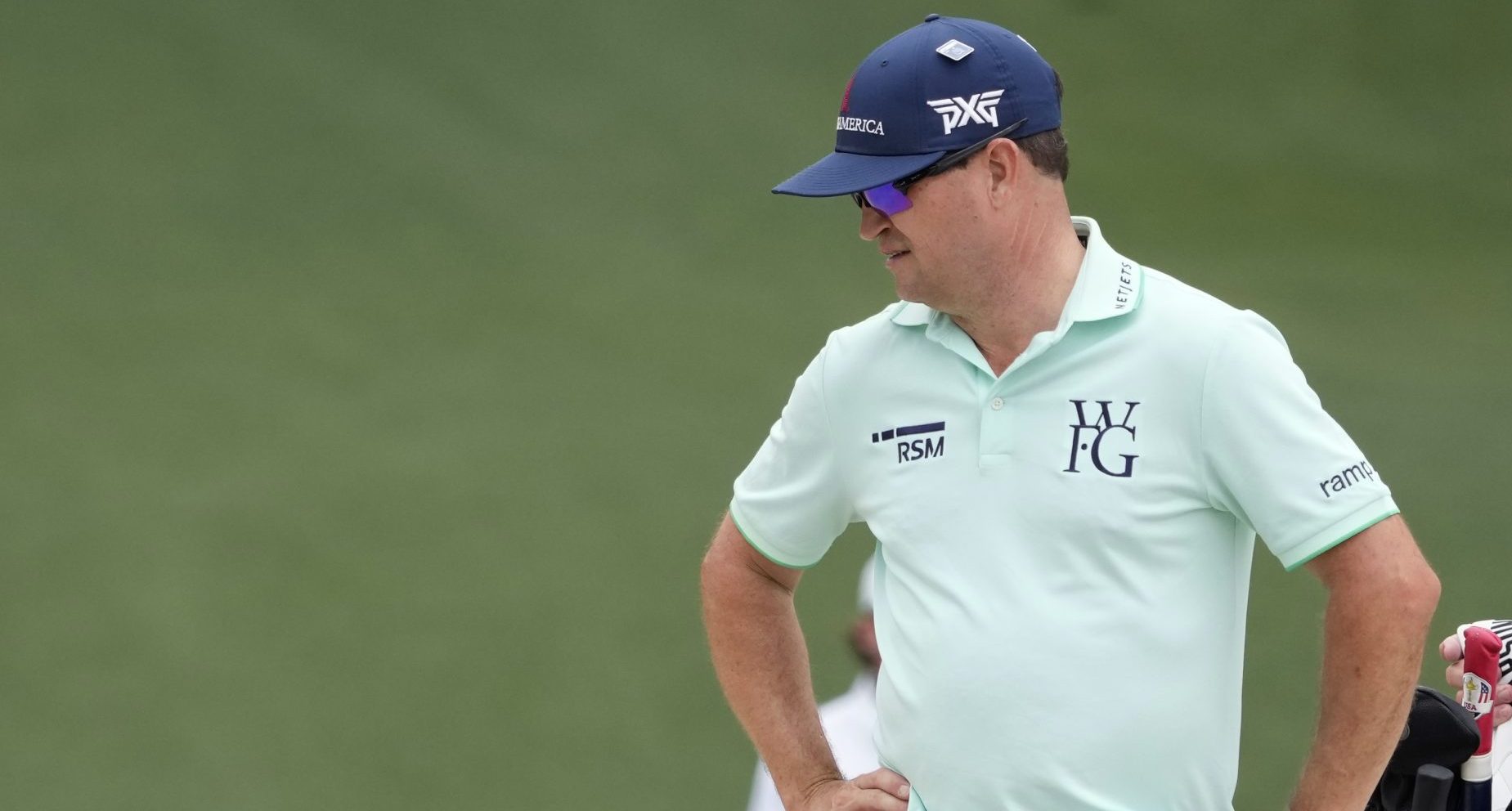Equipment
New Callaway Mavrik – A.I. Feels the Need, the Need for Speed
OK, enough with the (infamous) Top Gun quotes…
Ever since the debut of the original Great Big Bertha Epic in 2017, Callaway has been releasing drivers that continue to incorporate unique, new technologies designed to have a meaningful impact on performance without offending the rules.
Indeed, despite Jailbreak Technology first appearing approximately 3 years ago, it has not been rendered obsolete by new technology and, instead, was progressively updated in subsequent Callaway drivers, along with being incorporated into subsequent fairway woods and hybrids. As a result, Jailbreak will continue to solidify its benefit impact as it makes yet another appearance in 2020.
With respect to the last generation, Callaway turned the R&D over to a supercomputer that designed a clubface that looked like a Pringle on the inside but generated increased ball speeds from the outside.
While the Flash Face certainly did what it was advertised to, the hot face apparently had one shortcoming: long-term durability. Just ask Xander Schauffele about his Epic Flash Sub Zero driver that failed the R&A’s testing at the 2019 Open Championship…
View this post on Instagram
For 2020, Callaway has trusted the AI again, albeit with some additional parameters and instructions to ensure the Mavrik series has all of the Epic Flash’s strengths without its weaknesses.
You see, instead of directing the AI to strictly improve the clubface, Callaway opened the floodgates and has allowed the AI to assist with the entire club and help find that perfect balance of power and forgiveness.
So, without further adieu, here are the Mavrik’s 3 highlight features:
First, Flash Face SS20. As briefly mentioned above, Callaway utilized AI to design the Flash Face in the Epic Flash which turned out to be incredibly hot, but at the expense of durability.
With the Mavrik, Callaway decided to turn to a FS2S titanium face material, which, despite being 6 grams lighter than the Epic Flash’s face, is stronger and more resilient. For what it’s worth, 6 grams is a lot of weight to move around in a driver, particularly the driver face.
Additionally, Callaway updated the Flash Face SS20 to be even more helpful at maintaining ball speeds on off-center strikes, as the face has been uniquely engineered for each Mavrik model and, correspondingly, three different types of golfers.
Second, Cyclone Shaping. Aerodynamics have recently become the “hot item”, just look at the PING G410, Cobra SPEEDZONE and TaylorMade SIM.
Callaway’s supercomputer found a way to make the Mavrik driver head 61% more aerodynamically efficient, thereby making the Mavrik 1 MPH faster than the Epic Flash. While 1 MPH isn’t going to get you a speeding ticket, it should translate to an additional 2-3 yards.
Third, as briefly hinted at above, the Mavrik will be available in three separate models: the Mavrik (Standard), the Mavrik Sub-Zero and the Mavrik Max.
View this post on Instagram
The standard Mavrik will be a full, 460cc head and will be available in 9°, 10.5°, and 12° lofts, which are each adjustable with the help of Callaway’s OptiFit hosel (which allows loft adjustments of -1°, stated loft, +1° and +2°). Although all Mavriks will benefit from Cyclone Shaping, it’ll have the greatest impact on the standard Mavrik, thereby making it the most aerodynamically efficient of the lot.
The Sub-Zero will continue to be the low-spin model and, in contrast to prior iterations, will come in a 450cc head (in either 9° or 10.5°). Unfortunately, the design features that often accompany low-spin models require a reduced MOI (forgiveness), and the Mavrik Sub-Zero is no exception. Furthermore, Cyclone Shaping will be least prevalent on the Sub-Zero as its profile player is the high-speed golfer.
As has become synonymous with other “Max” labeled drivers, the Mavrik Max will be the most forgiving model in the family. The full, 460cc head, which will be available in 9°, 10.5°, and 12° lofts, will be the easiest to launch and feature a draw-bias shape.
Stock shafts for the Mavrik drivers will include the Project X EvenFlow Riptide, Aldila Rogue White 130 MSI and UST Mamiya Helium, all of which will be coupled with the Golf Pride ALIGN grip.
View this post on Instagram
With respect to the Mavrik fairway woods and hybrids, there will, likewise, be three different models:
- Mavrik – Available in 13.5° (3+), 15° (3), 16.5° (4), 18° (5) and 21° (7);
- Sub-Zero – Available in 13.5° (3+), 15° (3), 16.5° (4) and 18° (5); and
- Max – Available in 13.5° (3+), 15° (3), 18° (5), 20° (Heaven Wood), 21° (7), 23° (9) and 25° (11).
Immediately noticeable is that, unlike the Epic Flash, the Mavrik fairway woods and hybrids have all ditched the OptiFit hosel. While this is partially due to the additional third model being made available, but also due to the fact that, although less adjustable, Callaway was able to strip excess weight in an area it wasn’t helping performance to begin with.
Similar to the Mavrik drivers, the fairways will benefit from model and loft specific Flash Faces that maximize performance for each respective model. This is somewhat intuitive, but it’s natural that the low-lofted, power 3 wood player (13.5°) has different needs than the 7 wood golfer (21°). But to help further illustrate how model specific each Flash Face is, the leading edge on the Flash Face for the Max (i.e., the most forgiving variant) has been designed to assist golfers with getting the ball in the air off the deck.
However, it is worth noting that Flash Face SS20 in the fairway woods isn’t the same one found in the drivers. To explain, while the Flash Face SS20 in the drivers is made from a FS2S titanium face material, the one in the fairway woods is made from C300 maraging steel, which is known for its toughness, strength, durability and corrosion and crack resistance. In other words, C300 maraging steel is perfectly suited for fairway woods since they’re often played from off the turf and, therefore, are routinely beat into the ground.
Regardless, it’ll be very interesting to see how the Mavrik is received by the market. Initial impressions appear to be positive, but I think it’s more noteworthy that Schauffele switched the Mavrik the second Callaway let him at the Presidents Cup.
-
Equipment1 week ago
Bryson DeChambeau is Using Custom 3D Printed Irons at The Masters
-

 Fantasy Golf Predictions5 days ago
Fantasy Golf Predictions5 days agoFantasy Golf Picks, Odds, and Predictions – 2024 RBC Heritage
-
News1 week ago
U.S. Open Champ Takes a Dig at DeChambeau, but Is It Warranted?
-
News1 week ago
WATCH: Frustrated Ryder Cup Caption has Choice Words for Masters Patrons
-
News5 days ago
NOTEGATE: Neal Shipley Shuts Down Rumor that Tiger Handed him a Note
-

 Apparel1 week ago
Apparel1 week agoViktor Hovland Joins Team Puma
-

 Apparel1 week ago
Apparel1 week agoChervo Golf: An Italian Masterclass in Apparel and Gear
-
/cdn.vox-cdn.com/uploads/chorus_image/image/73268653/2125243325.0.jpg)
/cdn.vox-cdn.com/uploads/chorus_image/image/73268653/2125243325.0.jpg) News1 week ago
News1 week ago20 Ways to Get Invited to the Masters Tournament















